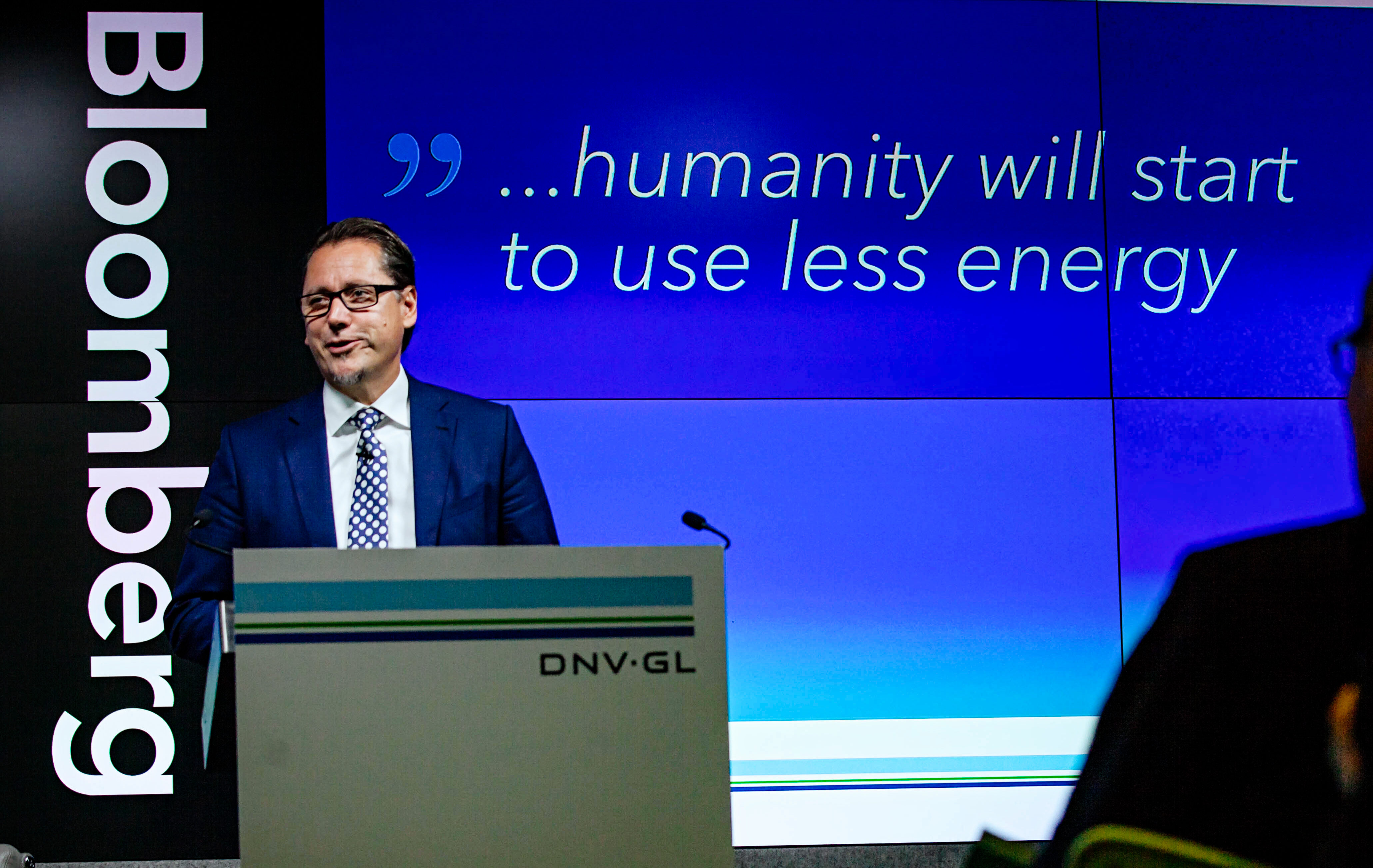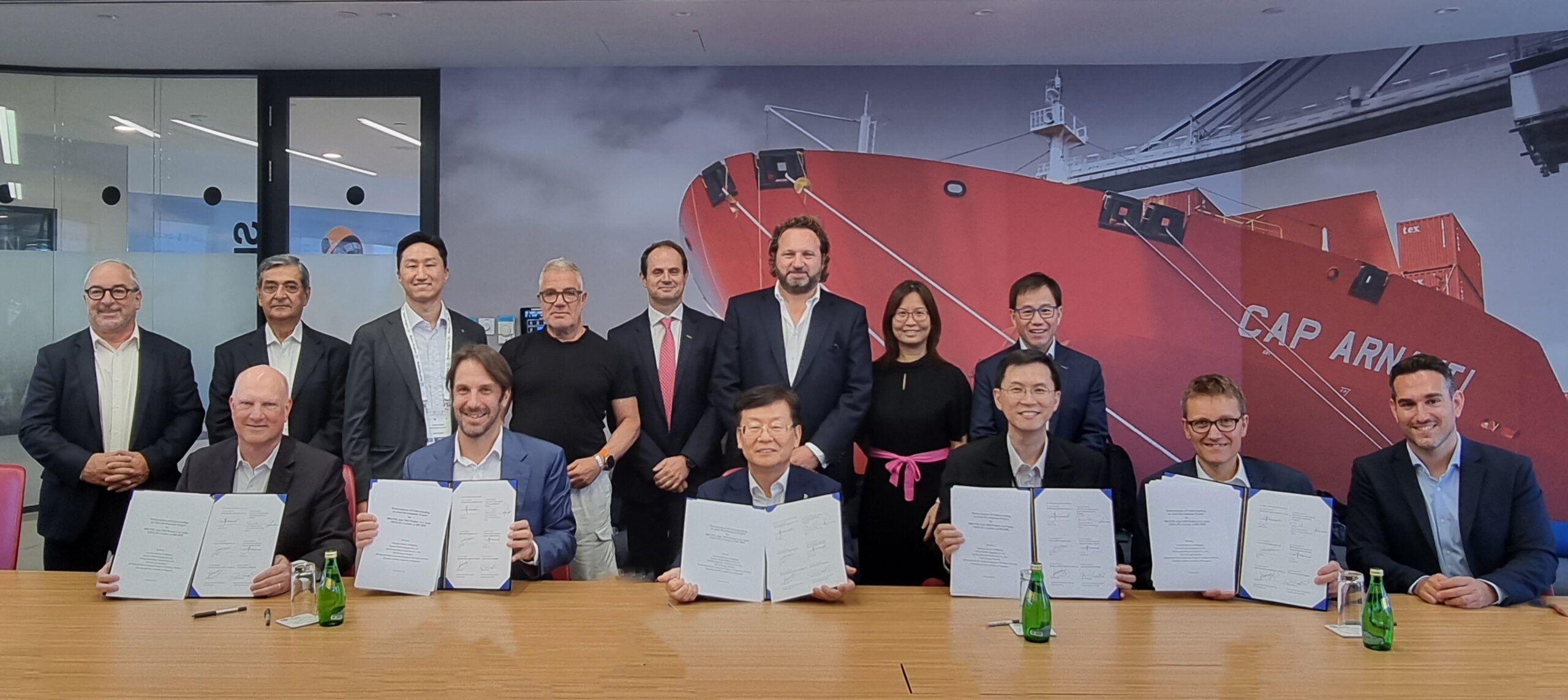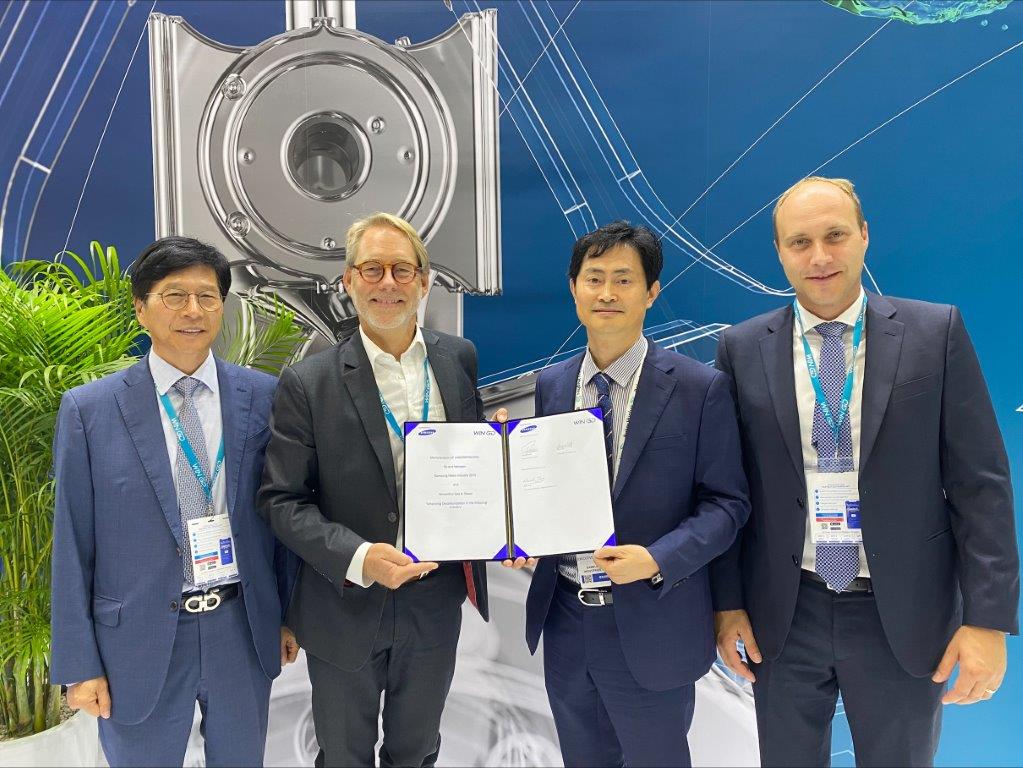THE gleaming glass and steel auditorium of a business news and information outlet may seem, at first glance at least, a strange place for DNV GL to reveal its energy transition outlook 2017.
DNV GL certainly wanted the business world as a whole sit up and take note of its message, so picking the basement space of Bloomberg London, where glass walls reveal banks of data, and the bustle of business teams no doubt trying to peer into the future, a natural.

It was also befitting a slick newsroom style performance as a short introduction from DNV GL chief executive Remi Eriksen led onto a debate with some notable business Illuminati that would put any business talk show to shame.
This piece of work is perhaps unique in that it is not portraying a set of possible future scenarios. It is more direct, looking at the world and saying. “This is how we think it is going to be.” However the caveat to that of course came from Eriksen himself when he revealed that the transition outlook will be updated in 2018, 2019. Etc no doubt until 2050 which is the year that the report points to.
There are some key factors at play, according to the DNV GL paper, and some of these are already apparent as we see the ongoing transition on society today. These will have an impact on the maritime sector, but unfortunately DNV GL have yet to reveal the outlook chapter that deals with our industry, especially as 2050, being under 33 years away will be seen in the potential life span of some vessels that could be ordered today and delivered in 2020. However one can easily extract implications for global trade and how this will impact shipping.
 For starters the day of oil has been and gone and gas is on the ascendancy. Apart from having a serious impact on vessel demand, it also has an impact on fuel demand and price. Crucial in the outlook is the fact that DNV GL believes that by 2050 half the world’s energy will come from electricity, with that electricity being created by an increased array of renewable sources.
For starters the day of oil has been and gone and gas is on the ascendancy. Apart from having a serious impact on vessel demand, it also has an impact on fuel demand and price. Crucial in the outlook is the fact that DNV GL believes that by 2050 half the world’s energy will come from electricity, with that electricity being created by an increased array of renewable sources.
So while in 2050 the energy split will be a 50/50 split of fossil fuels and non fossil fuel sources, all energy sources will be varied. But energy demand will level off. What this means is that energy per global capita will decrease as inefficiencies actually make an impact.
Energy demand for all sectors will level out and some will actually decrease, transport included.

The report authors believe that by somewhere in the mid 2030’s more than half of vehicle sales will be electric cars, and sales of diesel cars will have vanished by 2045. This represents an incredible sector development that will no doubt put additional pressure on the shipping sectors, not just through the increased use of batteries and fuel cells, but also in the carriage of these vehicles. How will the design of car carriers have to change to accommodate this new product? Experts have told Fathom that the major companies int he car carrier trade have been looking at this for some time.
With a decline in demand for oil, refinery owners will have to respond and this will influence fuel availability for vessels. Even today ahead of 2020 there is a huge concern by shipowners and operators over selecting a low sulphur fuel. Very soon ship operators will also have potential CO2 regulations and should this scenario prove to be accurate a need to think about fuel prices in light of reduced global hydrocarbon demand
The future of gas
While the headline aspect of the DNV GL Energy Transition report is that electricity and renewable are on the ascendancy, the report does underscore the fact that oil, and particularly gas, will still be a part of the mix.
In 2050, the report says, oil and gas will still account for 44% of the energy mix, which is not a significant drop from the 53% today.Offshore oil production will be half the current 30m barrels a day by 2050 according to DNV GL. Onshore oil production will decline 1.4% annually, while non-conventional onshore oil production (such as fracking) will will double by 2035 to become 30% of global crude oil production. Gas however will become the world’s major energy source by 2035 as the world transitions to the picture DNV GL paints for 2050.
Stability
During the panel discussion John Knight, head of global strategy at Norwegian energy giant Statoil, pointed out that the DNV GL projection relies on a lot of changes, and change can be seen as volatility Questions such as whether oil and gas prices will remain low, how much trust is there in new projects.

There is also the question of infrastructure investment and development. Electricity and renewables require investment in projects and while energy storage has improved in recent years, with prices coming down there still needs to be the sourcing of lithium for batteries.
The missing parts of the energy puzzle

While DNV GL has been complimented for being brave enough for publishing a vision of the future rather than a set of scenarios, it has been noted that there are aspects of the future energy mix that it has omitted altogether, and one of these may yet have a role to play according to one of the panelists at the launch of the energy transition outlook.
Lord Oxburgh was noted, in 2005 while chairman of the UK arm of Shell, for expressing fears of global warming and the need for reducing greenhouse gases. He was a driver behind the changing image of the then oil focused giant into more of an energy giant, and is a former honorary president of the Carbon Capture and Storage Association in the UK.
He believes that CCS may be a viable form of dealing with anthropogenic carbon emissions despite a lack lustre policy drive from some governments and could well be a part of the influential technologies that impact energy resource management. He also believes nuclear may yet form a basis for base load electricity supply and even transportation. “These may not be needed,” he said. “but these should be part of out insurance for not meeting the two degrees [ the target temperature increase limit according to the UNFCCC Paris Agreement]
While nuclear has a poor image and the issue of how to handle the depleted fuel has yet to be full resolved, it does remain a potential energy source he said, particularly as technology has evolved significantly. Countries like Russia have been significant backers of nuclear power, and have a number of nuclear powered icebreakers and naval vessels which demonstrate the reality of nuclear powered shipping.


































